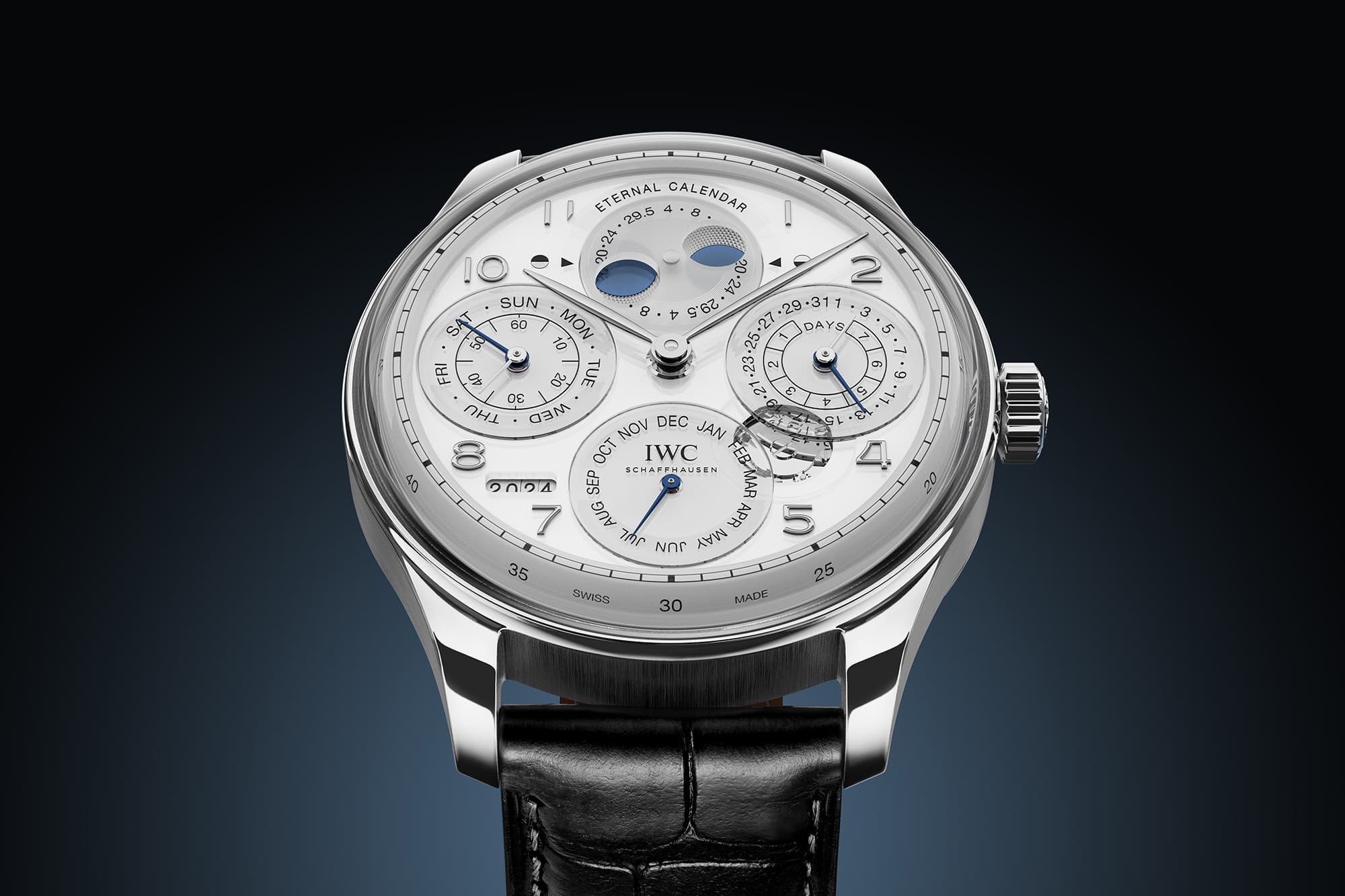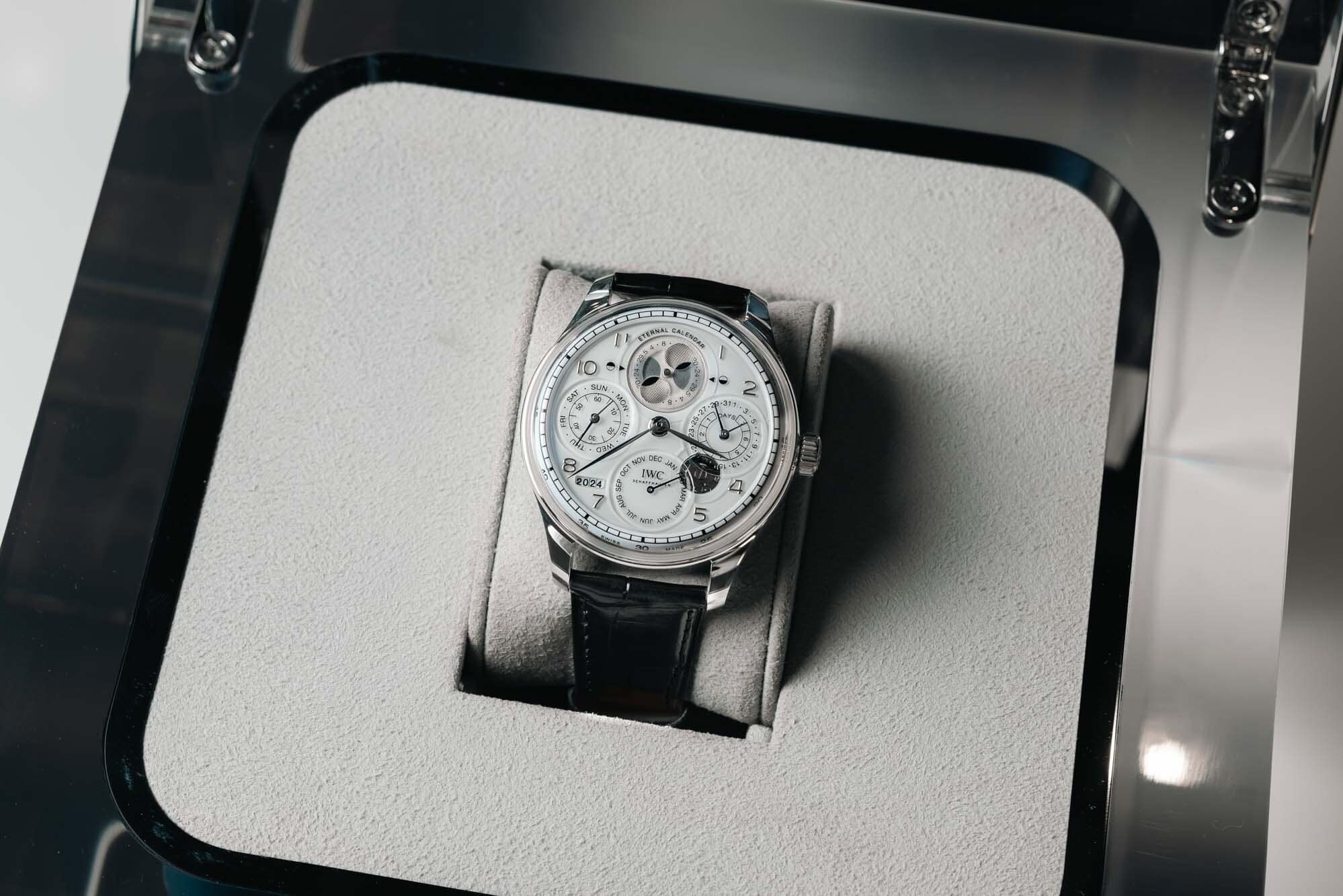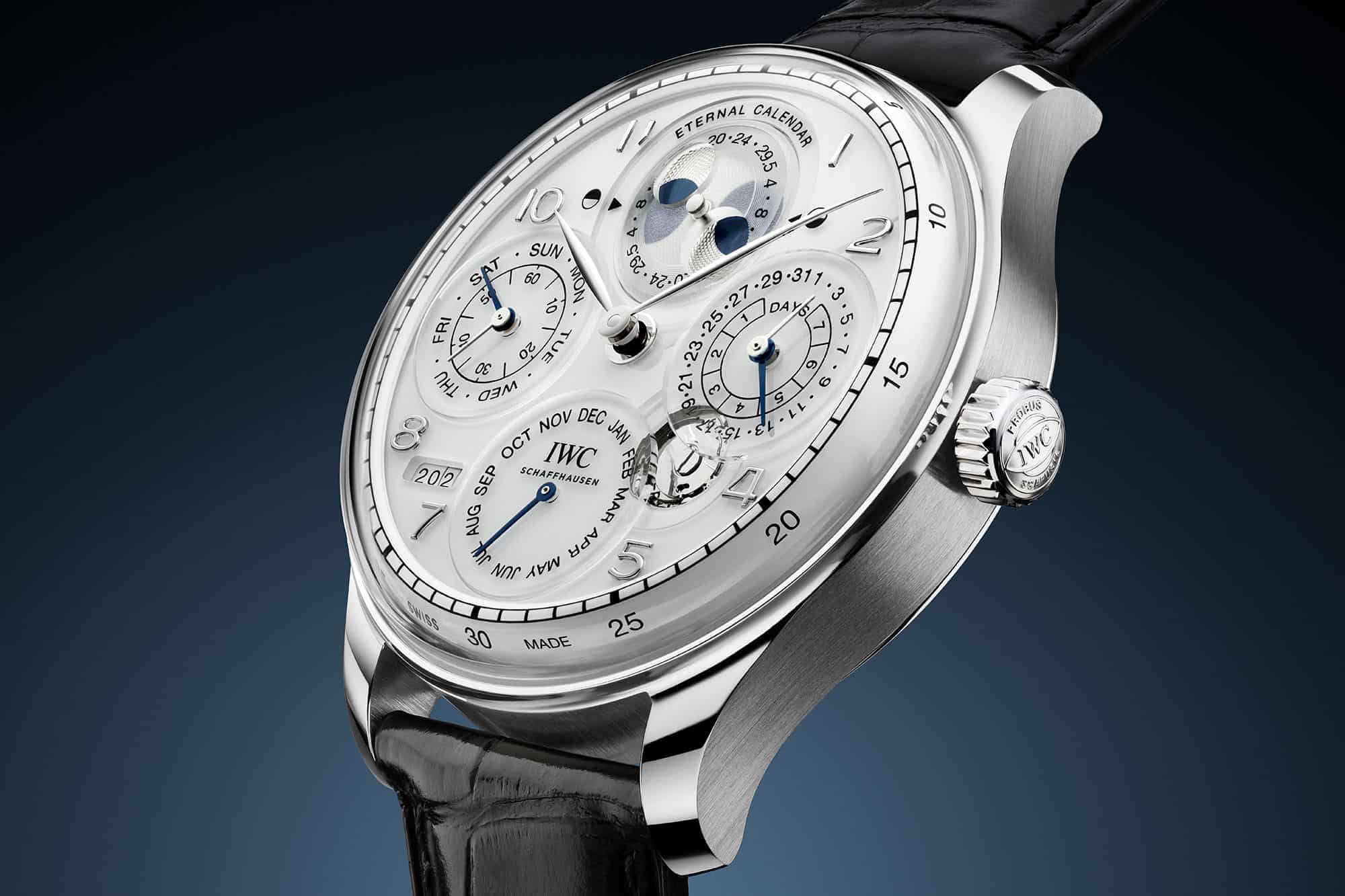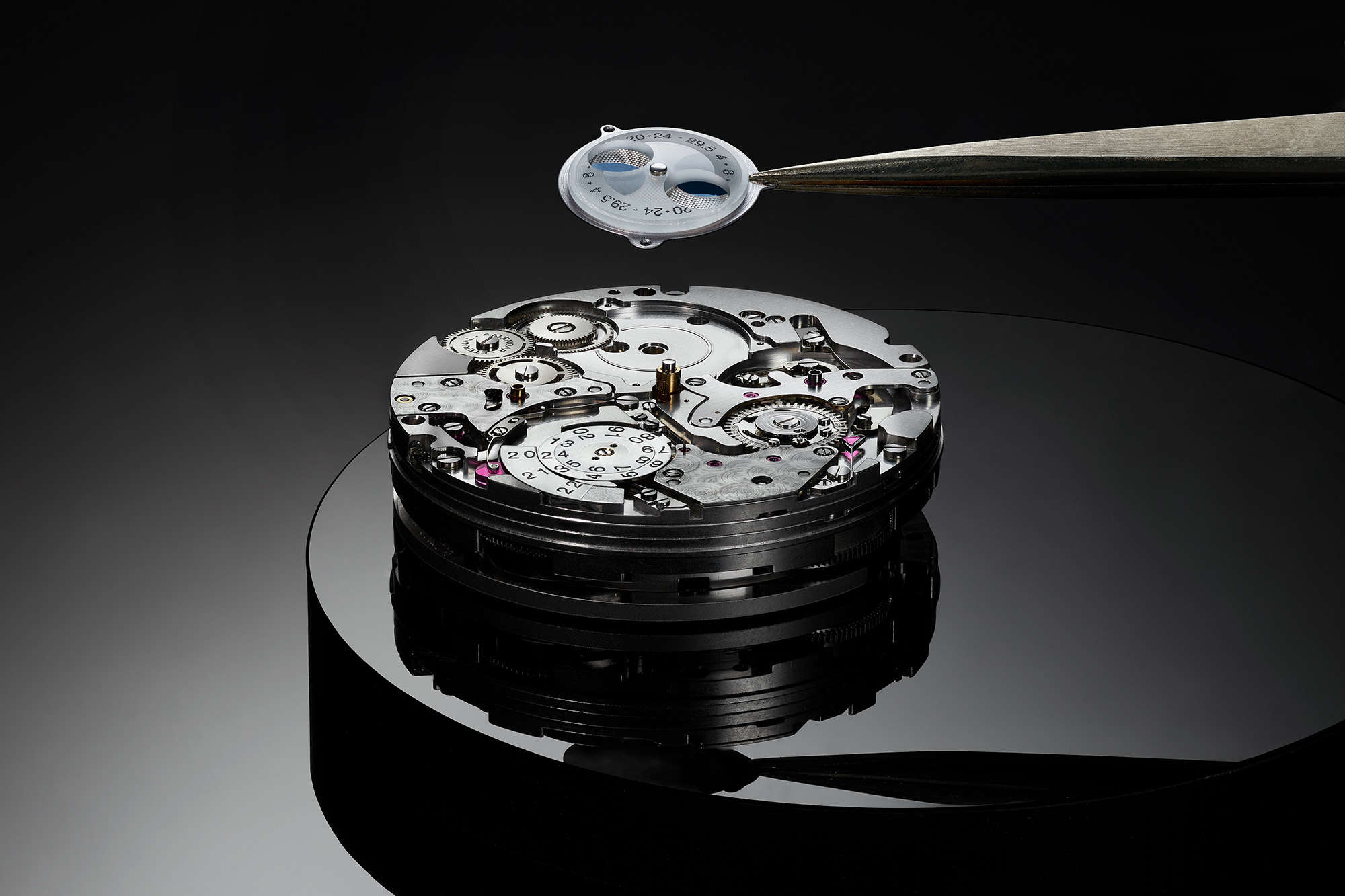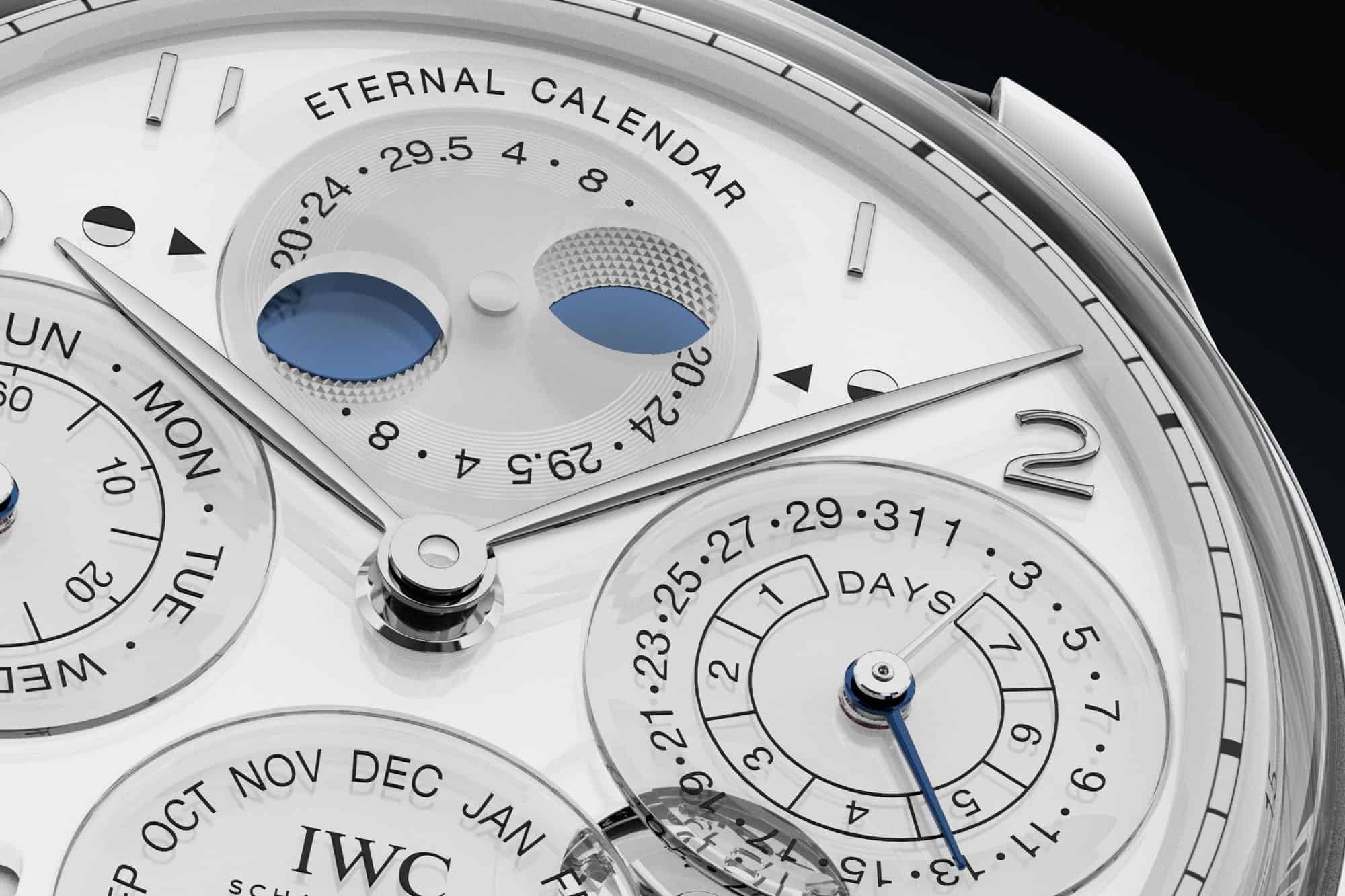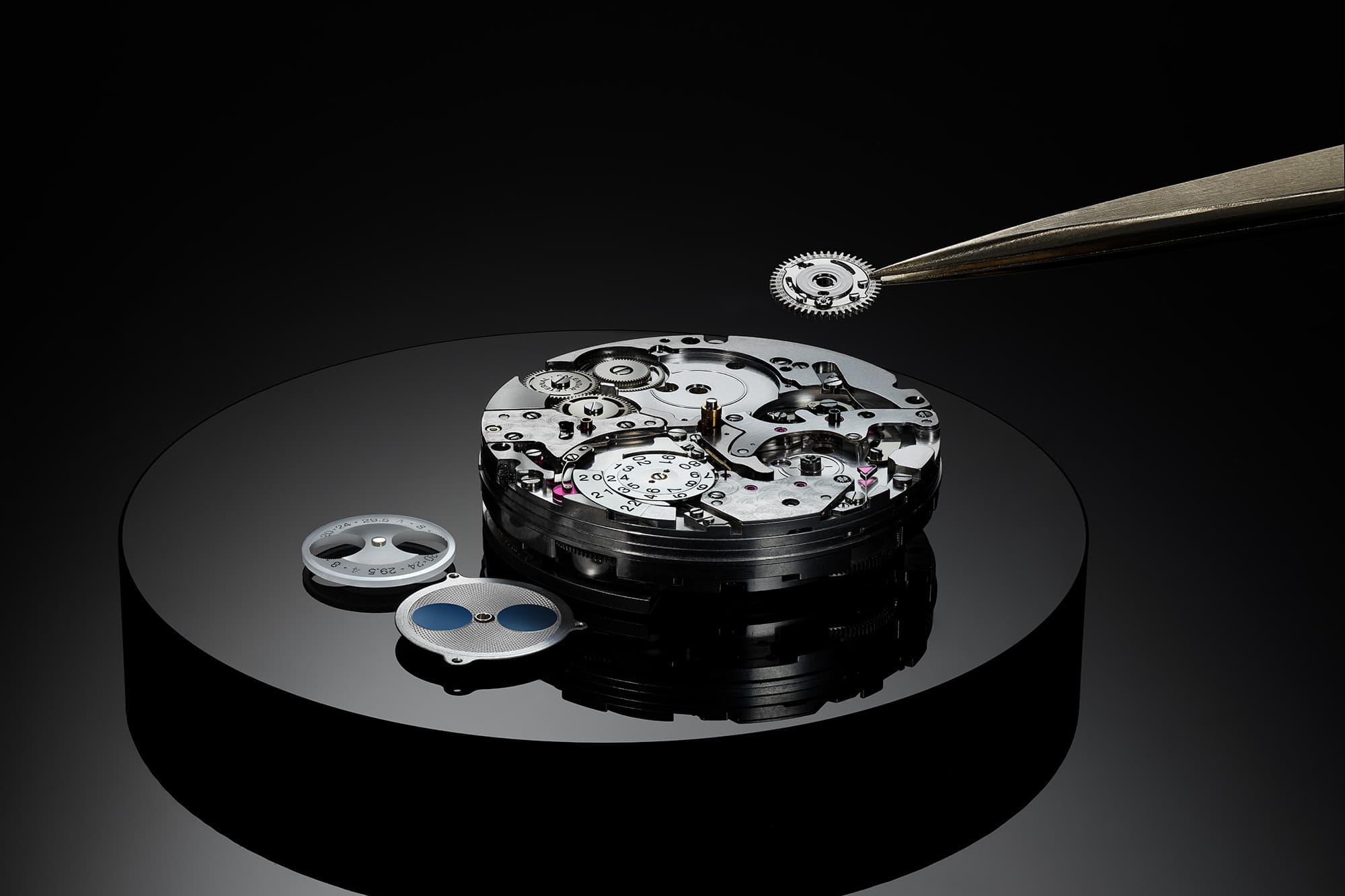Watches that do more than a human being is capable of are nothing new. Rolex, Omega, and others make dive watches that are capable of reaching depths that no man or woman could survive. The Rolex Deepsea Challenge is rated to 11,000 meters (which means it’s tested to even greater depths) while the deepest point in the ocean is about 10,900 meters, give or take. That means this particular dive watch can go deeper than any depth possible on the planet. Even that, somehow, feels more practical than IWC’s big release at Watches & Wonders, the Portugieser Eternal Calendar. This is the brand’s first secular calendar, which accounts for leap-year exception rules in the Gregorian calendar that play out over a 400 year span. A calendar complication that no living human will have a chance to observe do its thing in real time is one thing, but it’s the moonphase on this watch that is truly looking ahead: IWC claims it’s accurate to 45 million years. And just think, it wasn’t even ten years ago that the Apple Watch had many in this industry scared that watchmaking could be killed by smart-gadgets. Talk about confidence.
The concept of a secular calendar will be worth a refresher for many, as it’s a truly rare complication that most brands simply don’t attempt given the incredibly long timeframes involved (the last one we discussed in these pages was from indie Furlan Marri). The gist is this: in addition to a leap year every four years, Gregorian calendar needs an additional tweak to keep it in line with a solar year. To do this, certain leap years are skipped. Any centurial year divisible by 400 is a leap year, while others are “common” years, meaning they have 28 day Februaries. In practice, this means that the years 2000 and 2400 are leap years, while 2100, 2200, and 2300 are common years. A secular calendar, effectively, knows the difference between leap and common years at these staggering centuries long intervals, and does not need a correction in a skipped leap year like a run of the mill perpetual calendar would.
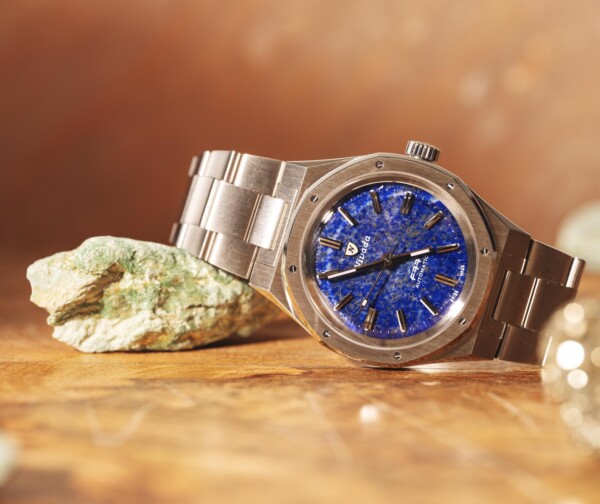








 Featured Videos
Featured Videos




